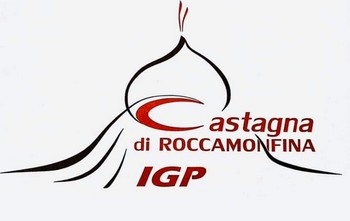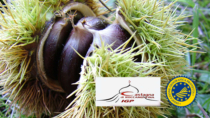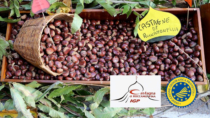Description
The Castagna di Roccamonfina PGI refers to the fresh or dried fruit obtained from the botanical species Castanea sativa M., deriving from the cultivars Primitiva (Tempestiva), Napoletana (Riccia or Riccia Napoletana), Mercogliana (Marrone), Paccuta and Lucente (Lucida).
Production Area
The production area of Castagna di Roccamonfina PGI is within the entire territory of the municipalities of Caianello, Conca della Campania, Galluccio, Marzano Appio, Roccamonfina, Sessa Aurunca, Teano, Tora and Piccilli, in the Province of Caserta, in the Campania region.
Production Method
The chestnuts are traditionally collected from the ground by hand or with the aid of machinery; the harvest begins in September and ends in October, and must in any event take place within 7 days of the fruit falling naturally off the tree. The chestnut trees are regularly maintained and pruned using the systems which are traditional in the area. The freshly harvested chestnuts can be processed in hot water or subjected to a "dipping" technique known as “curatura”, which consists of immersing the fruit in vats filled with room temperature water for up to 10 days, followed by drying. They can be peeled using steam or fire (“brulage” technique). Frozen storage is permitted. For dried Castagna di Roccamonfina PGI, a traditional drying technique is used: the chestnuts are placed on racks over a wood fire or in modern ovens, at a low temperature; subsequent peeling is permitted.
Appearance and Flavour
The Castagna di Roccamonfina PGI has an asymmetrical, tendentially globular shape and is medium sized. The shell is dark chestnut brown with slightly darker grooves, and is hard and thin. The pulp is milk white and usually crunchy, with a delicate, medium sweet flavour.
History
Chestnut trees were cultivated in the Roccamonfina area for hundreds of years before the Roman dominion, and this developed substantially in the Middle Ages, following the barbarian invasions. However, a famous folk tale attributes the introduction of chestnut trees to the area to Saint Bernardino of Siena, during the pilgrimage that led to the construction of the Sanctuary of the Madonna dei Lattani in 1430. The economic importance of this product is confirmed over the following centuries by written testimonies, including La Sede Degli Aurunci (1737) by Girolamo Perrotta and local market reports which from the mid-nineteenth century show the average sale price of chestnuts from Roccamonfina.
Gastronomy
Castagna di Roccamonfina PGI can be stored for a few months in a cool, dry place. It is ideal for serving boiled or roasted with traditional roasts. It is used as an ingredient in traditional desserts such as castagnaccio (chestnut cake) or chestnut fritters, and in more sophisticated desserts like Mont Blanc. Dried chestnuts can also be used in savoury dishes, for example Risotto with Castagna di Roccamonfina PGI, legume soups, or chestnut tagliatelle.
Marketing
The product is marketed as Castagna di Roccamonfina PGI, in the following typologies: fresh; unshelled and dried; whole shelled and dried; whole and peeled. The fresh product is available on the market from the beginning of September to mid-November, while the dried product is available year-round. It is sold in containers made of different materials, weighing between 100 g and 25 kg. The product can be vacuum-packed or packed in controlled atmosphere packaging.
Distinctive Features
Due to the production area’s low altitudes, volcanic soil and warm, humid climate, Castagna di Roccamonfina PGI is the first Italian chestnut to ripen and enter the market at the beginning of September, well ahead of the others.










